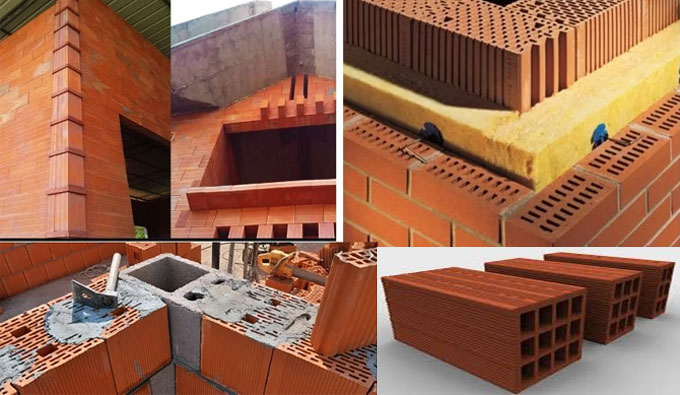
Porotherm Bricks : Properties, Advantages and Applications

Porotherm clay bricks are special type of bricks made using natural clay, coal ash, rice husk, and granite slurry. Apart from the common size 400x200x200mm, they come in various sizes. They help in providing walling system which aids in thermal insulation resulting in cooler interiors in hot summer and warm interior in cold seasons. These clays apart from being environmentally friendly, they are economical and easy to use.
Properties:
a. The compressive strength is greater than 3.5MPa.
b. High thermal and sound insulation.
c. Low weight.
d. High fire resistance.
e. Density range from 694 to 783 kg/m3.
f. Large size but light in weight.
g. Water absorption is around 15.
Advantages:
1. Environmental Friendly: Porotherm bricks are made up of recycled materials hence, they?re eco friendly.
2. Cost Effective: Porotherm bricks save lot of energy by cutting operation and construction cost.
3. Speed of Construction: Due to its lightweight nature and ease of handling, it increases the speed of construction.
4. High Durability: They?re highly durable and can easily resist fire and carbonation, thus possess long life.
5. Thermal Insulation: Perforation of these bricks results in great thermal insulation.
6. Good Strength: Porotherm bricks are manufactured at high temperatures. It?s composition includes teeracotta which adds strength to the brick. Compressive strength of porotherm brick is greater than 3.5MPa.
Disadvantages:
1. Compressive strength of porotherm bricks is 3.5 N/mm2, which restricts them to be used in huge architectures.
2. Water absorption is about 15% and hence gets exposed to salt attack thus, degrading the structure.
3. Since these bricks have a density of 694 to 783 kg/m3 which is less than that of clay bricks having density of 1400 kg/m3 to 2100 kg/m3, it is not an ideal choice for the construction of foundation and base-slab works in areas of high round water table as they would not able to resist the negative pressure of water and capillary action.
Application:
1. Partition walls.
2. Single leaf or monolithic internal and external walls.
3. Inner leaf of brick faced cavity walls.
4. Inner and outer leaves of rendered cavity walls.
5. Load bearing and non-load bearing wall constructions.
6. Infill panels within framed structures.


